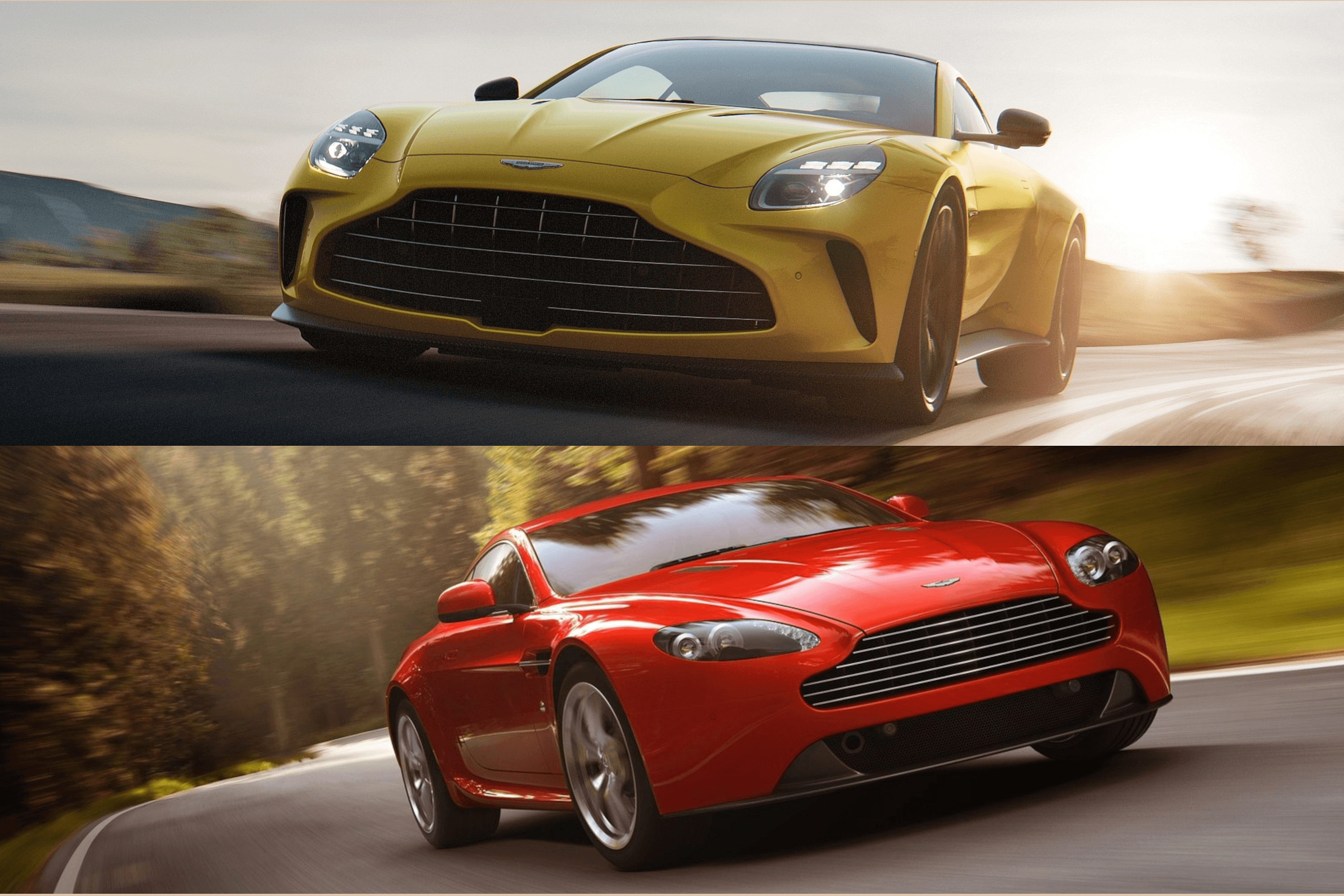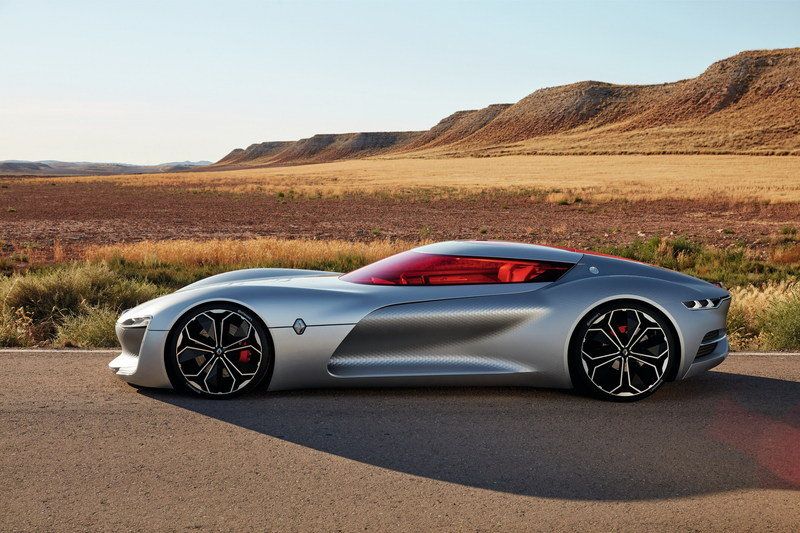Is it just us, or are cars way too practical these days? The Aston Martin V8 Cygnet is a good example of how much fun we can have when we go in the exact opposite direction. Based on the Aston Martin Cygnet, itself based on the Toyota iQ, it was essentially a one-off micro muscle car branded as “the ultimate city car,” and a testament to what automakers can achieve when they let their imaginations run wild.
We know it will never, ever happen, but here’s why we want Aston Martin to push this ridiculous one-off microcar into production.
Available Trims
2015 Scion iQ
- Base MSRP
- $15,665
- Engine
- 1.3L Inline-4 Gas
- Horsepower
- 94 hp
- Fuel Economy
- 36/37 MPG
Sales numbers have been sourced via GoodCarBadCar.net.
A Look Back At The V8 Aston Martin Cygnet
To get an idea of what the V8 Aston Martin Cygnet is all about, we’ve got to go back to the base Cygnet, a short-lived three-door hatchback marketed in the UK from 2011 to 2013. Aston Martin started with a 2011 Toyota/Scion iQ, then they revised the interior and exterior a bit, and basically called it a day. Everything under the hood is a Toyota iQ, but the interior features like two-tone leather and Alcantara upholstery, and the exterior styling upgrades, like the sleek horizontal-barred grille, made it an Aston Martin.
|
2011-2013 Aston Martin Cygnet Performance Specs |
|
|
Engine |
1.3-Liter 4-Cylinder |
|
Power |
97 hp |
|
Torque |
91 lb-ft |
|
Drivetrain |
FWD |
|
Transmission |
6-Speed Manual |
Aston Martin’s aim was to meet 2012 EU emissions regulations, which was tough to do considering it was a low-volume automaker that only sold V8 and V12-powered sports cars and grand tourers. But it devised a cunning plan, which involved the Toyota iQ. The iQ was just the ticket, with its 97-bhp engine averaging an impressive fuel economy of around 59 miles to the gallon. Aston purchased a few and put their badge on the front, hoping to bring their total emissions number down.
Aston Martin wanted to sell 4,000 of these cars to the European market each year. In the first model year, they sold 261. Then 172 for 2012, 131 for 2013, and finally, a piddly 29 units in 2014. The car launched at a base MSRP of £30,995 in 2011, which comes out to around $40,500 in USD, which adjusted for inflation works out to around $58,000. The iQ launched at about one third the price of the Cygnet, and before you ask, yes, it was available in Europe. So Aston Martin was tripling the price of a cramped microcar, and adding nothing but a fancy grille and some leather seats.
We’re not saying this car is without its charms. We’re just saying it’s no wonder it flopped. Nobody wants to spend Aston Martin money on a jazzed-up bumper car.
An 8-Cylinder Clown Car?
|
V8 Aston Martin Cygnet Performance Specs |
|
|
Engine |
4.7-Liter 8-Cylinder |
|
Power |
436 hp |
|
Torque |
361 lb-ft |
|
Drivetrain |
RWD |
|
Transmission |
7-Speed Automated Manual |
If you ask most drivers, the only thing the Aston Martin Cygnet was missing was for the horn to sound like a clown’s nose. If you asked Aston Martin’s Q branch, they’d tell you it was missing a 4.7-liter 8-cylinder engine. And then you’d stare at them with a blank look on your face because what the hell are they talking about?
The engine boasts a bhp of 430, and the car itself is usually listed with the same specs as the 2016 Aston Martin Vantage S with which it shares its engine. Aston Martin claims a top speed of 170 mph, more than 60mph faster than the base Cygnet, and a 0-60 of 4.2 seconds, beating the Vantage S by about half a second.

Related
Old Vs. New: 2005 Aston Martin V8 Vantage Vs. 2025 Aston Martin Vantage
Aston Martin has kept the V8 alive for 20 years.
In theory, and in execution, putting a V8 in a Cygnet isn’t so different from a putting a supercar engine in a go-kart. This car was never meant to go that fast.
What we really like about this car, and the reason why we wish they’d push it through to production, is that they went ahead and made it rear-wheel drive. They didn’t have to do that. The car would still be a ridiculous conversation piece generating YouTube videos and articles like this one just for having eight cylinders. But they made it RWD, making it one of the tiniest muscle cars ever built.
It may be a Japanese car with a European spin, but it feels distinctively American in spirit, and we’d love to see it tear up the interstate. Just watch the video below and listen to the noises it makes.
Other Rare Aston Martins We Wouldn’t Mind Seeing Hit The Market
Any gearhead has seen more than a few million-dollar one-off supercars in their day. The V8 Cygnet proves that one-offs and limited-run cars don’t necessarily need to be track-only, Guinness-record-holding, NASA-engineered monsters. Sometimes it’s just an idea that’s simply too weird, too niche, or too much fun for the public to handle. Here are a few limited-run Aston Martins that we think prove the automaker has no shortage of imaginative engineers.
The Aston Martin Bulldog
A mid-engine twin-turbo 5.3-liter V8 that looked like a DMC DeLorean mixed with a bigscreen Panasonic television set. Gullwing doors, six hundred horses, and front-to-back aluminum panels. The Bulldog’s design was overseen by Mike Loasby and William Towns. Now, at first glance you’re going to say “Big deal, someone at Aston Martin must have seen Back to the Future.” But the Bulldog debuted in 1979. The DeLorean launched in 1981, with input from none other than Mike Loasby. So the DeLorean is a pretty clear example of someone taking the baton from Aston Martin and running with it. The Bulldog was intended for a 15-25-car run, but production turned out to be too costly, so they settled for one.

Add CarBuzz to your Google News feed.
Les Vacances
Aston Martin has been attached to a number of “Shooting Brake” one-offs, a body style combining elements of the station wagon and the coupe. We particularly like the 1993 Aston Martin Virage Lagonda Shooting Brake, nicknamed ‘Les Vacances’ by its first owner, who used it as a vacation car. The car itself was just a 1993 Virage, but the buyer, car collector Dr. Roland Muller, took it to Aston Martin Works and had it converted into a five-door shooting brake with left-hand drive, a 456-hp 6.3-liter V8 engine, and a 3-speed automatic transmission (eventually swapped out for a 6-speed manual). Les Vacances is a testament to one collector’s tastes, and to what Aston Martin Works can do for you if you’ve got the money to finance the project.
Ogle Sotheby Special
Financed by the Wills cigarette firm, the 1972 Ogle Sotheby Special was basically a DBS V8, but with a special fiberglass body by Ogle Design. The neatest feature would be the 22 lights on the back of the car in two horizontal rows of 11. Whether or not that’s what they were going for, it looks like a pack of smokes, especially after the car was resprayed with a cigarette-themed livery. The coolest thing about these lights was the fact that more of them would light up the harder you pressed the brake pedal. That’s a pretty neat idea. Only two of these cars exist, being the original, and a special order second model.

Related
10 Coolest Concept Cars Of The Last Decade
No ridiculous flying vehicles here.
Why Did Microcars Never Catch On In The US, Anyway?
Japan’s got their kei cars, Europe has their microcars like the Peel P50. In America, if you go any smaller than a subcompact coupe, you’re talking about golf-carts. Many put the blame on Americans: we must not want tiny cars, right? Well, the Fiat 500 hit a sales peak in the US of 46,999 units back in 2012, and that car’s pretty darn small.
The issue may come down to legality more than anything. Anything small enough to classify as a microcar is probably too small for American highways in most states, and who needs a cramped two-seater that you’re not allowed to take over the border? In any event, tiny cars don’t make as much sense in sprawling environments like the US as they do in the relatively condensed, neighborly nations of Japan and England, where you can drive from one end of the country and back again in a day or so.
Sources:
GoodCarBadCar.net

